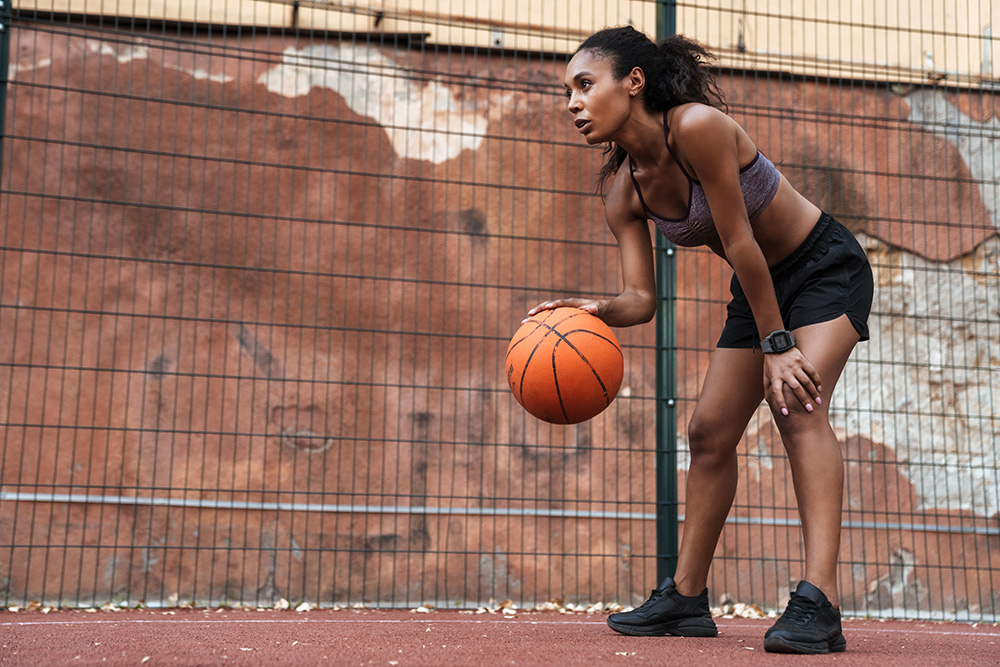
Basketball season is right around the corner. The basketball season is long for professional and collegiate athletes – typically running from October through April – with the NBA playing around 240 games in a regular season. From professional players to recreational athletes alike, injuries can occur. The sport involves short bursts of intense activity, combined with physical contact and quick stops and starts – all of which can lead to a injury.
Dr. Richard Cunningham is an orthopedic surgeon at Vail-Summit Orthopaedics & Neurosurgery who specializes in treating injuries to the knee and shoulder. If you have sustained an injury from playing basketball, please contact his office.
Types of Injuries Seen in Basketball Players
The fast-paced action of basketball can cause a wide range of acute and chronic injuries. Overuse injuries are seen due to the repetitive motion involved with certain movements in basketball. Outside of concussions, the most common basketball injuries typically involve the lower body. Common basketball injuries include:
- Jumper’s knee
- MCL tear
- ACL tear
- Sprained ankle
- Stress fracture
- Jammed fingers
- Muscle strains
- Shin splints
Due to many young athletes focusing on just one sport early on and training year-round, sports medicine doctors are seeing an increase in overuse injuries. The American Academy of Orthopaedic Surgeons (AAOS) has partnered with STOP Sports Injuries to help educate parents, coaches, and athletes about how to prevent overuse injuries in young athletes.
Unfortunately, some injuries are unavoidable and will always be a part of basketball. Severe injuries like ACL tears are not as common in basketball as it is not a high-contact sport such as football, but knee injuries — mostly minor knee sprains and strains still occur in basketball. However, with the proper training and conditioning ahead of time, and by going through the necessary rehabilitation after injuries, the time loss due to injuries can be lessened so that athletes can still achieve their goals for the season.
How to Return to Play After a Basketball Injury
The type of injury and subsequent treatment will determine the return to play protocol for athletes. In cases of injuries that require surgery such as an ACL tear, athletes are out the entire season. Other Injuries such as MCL tears or a stress fracture require significant time to fully heal but athletes can still salvage a good portion of their season.
If an injury is more minor, rest and physical therapy may be all that is required to return to play. Injuries such as jumper’s knee or a sprained ankle can be treated non-surgically. An injured athlete’s symptoms must be completely resolved before returning to full play. For example, Dr. Cunningham hopes to see:
- Full, pain-free range of motion of the knee with no swelling and normal strength
- Symptom free during play
- In the case of a concussion, having clearance from a sports medicine provider
If you have sustained an acute or chronic basketball injury and are in need of proper medical treatment, reach out to Dr. Cunningham’s team today. Dr. Cunningham is a board-certified, fellowship trained orthopedic surgeon who specializes in the treatment of acute knee and shoulder injuries.
How to Prevent Basketball Injuries
Basketball injury prevention and training begins months before the start of the season. Pre-season allows athletes to build a base of strength and endurance. Strengthening the muscles in your legs will help build better support for your knees and prevent some injuries. Try to get at least a base level of conditioning in the weeks before your basketball season starts. Focus on:
- Strength-training such as squats, hamstring curls, dead lifts, and gluteal strengthening
- Plyometrics
- Jumping drills
- Agility drills
- Conditioning drills that will improve your cardiovascular fitness
In addition to getting your body physically fit and ready for the season, it is important to focus on proper jumping and landing technique. In addition, it is important to ensure the following:
- Wear gym shoes that property fit, are non-skid and consider high tops for ankle support
- Use proper protection equipment such as a mouth guard and lace up ankle braces if needed
- Warm up and stretch before each session
- Use proper technique and follow the rules
- Do not wear jewelry
- Play on a clean, dry, safe surface
If you have sustained a basketball injury, reach out to Dr. Cunningham and his team today. His team can be reached in Vail at (970) 476-2451, in Frisco (970) 668-3633, and Edwards (970) 569-3240.
